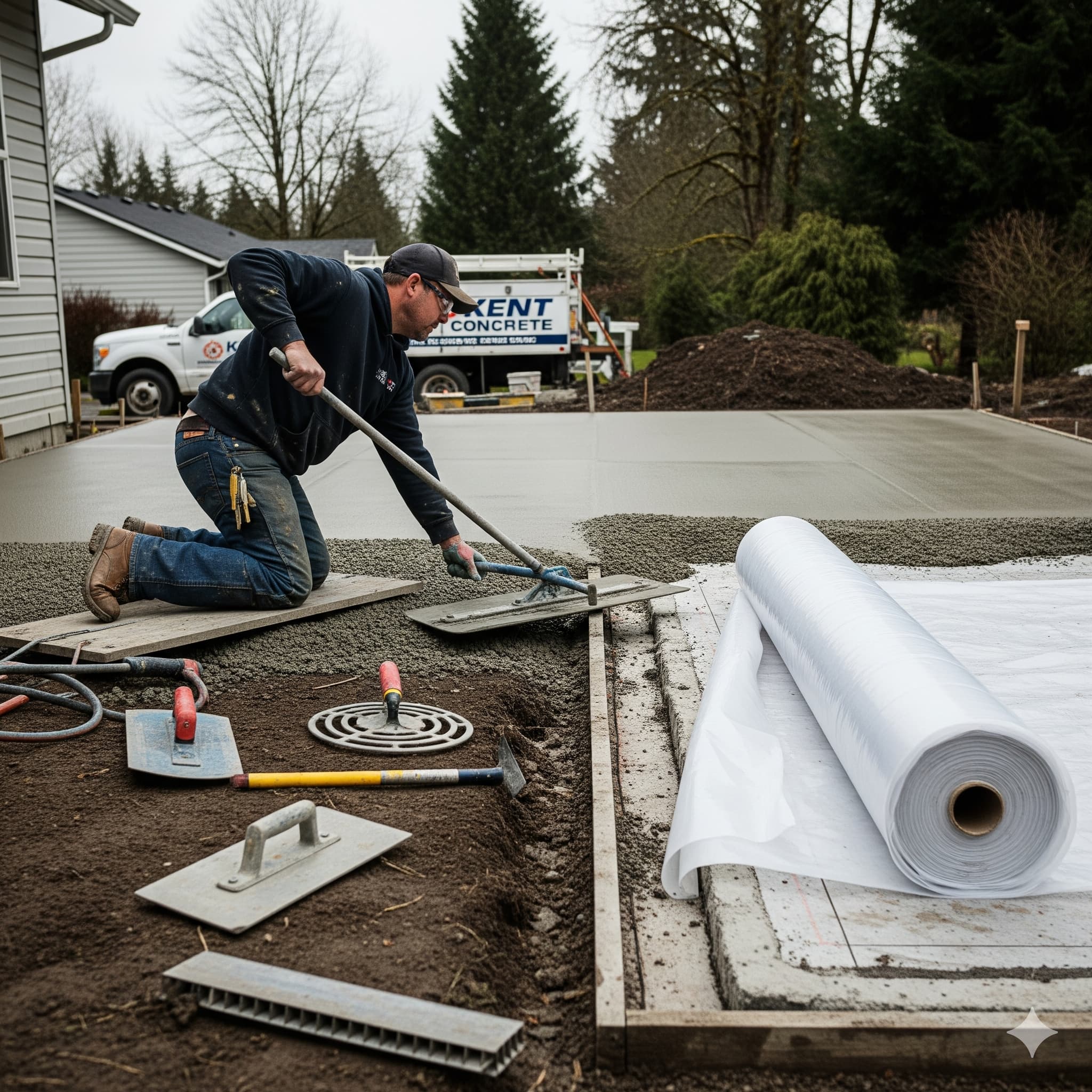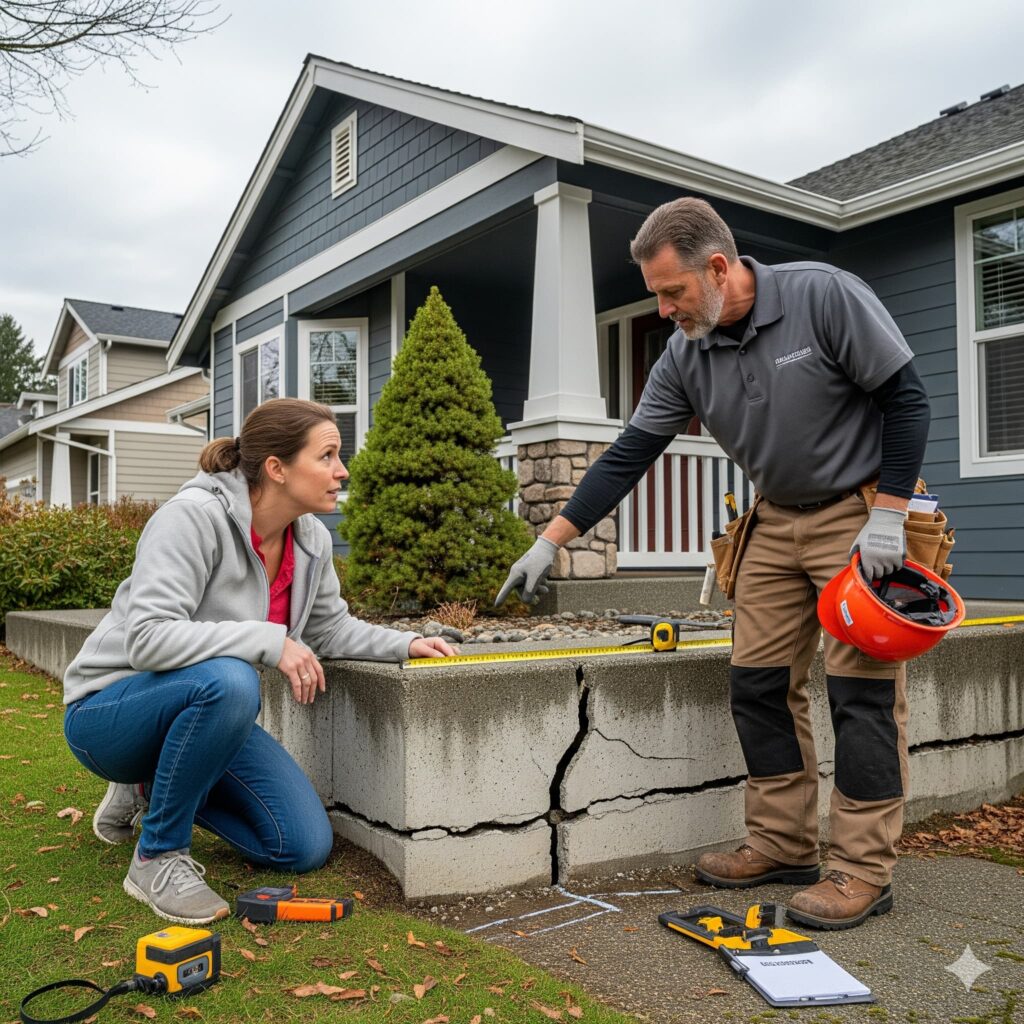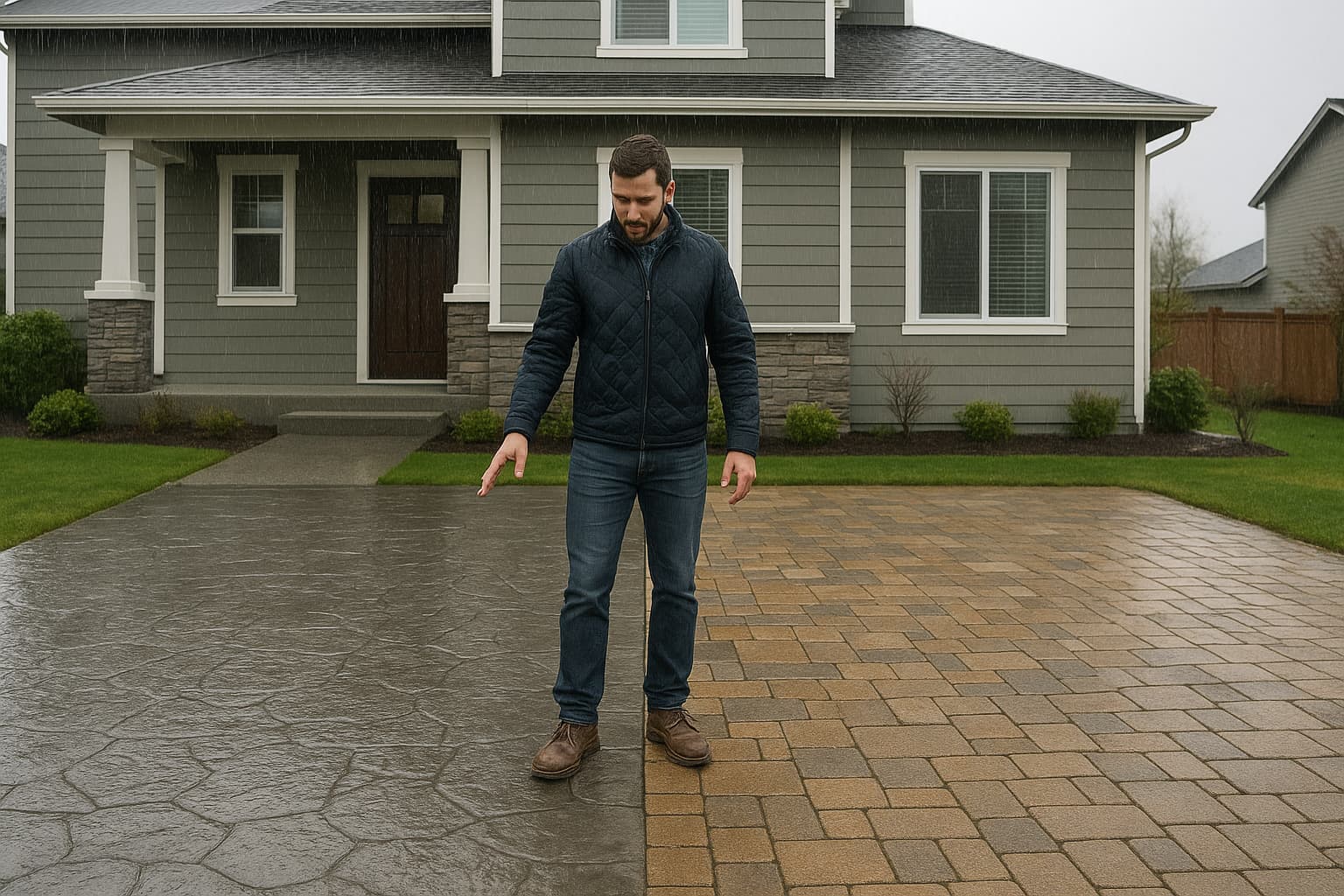
5 Signs You Need Concrete Foundation Repair in Kent
Your home’s foundation serves as the critical structural element supporting everything above it, making early detection of problems essential for preventing costly damage and maintaining structural integrity. Kent’s unique geological conditions, including expansive clay soils and seasonal moisture variations, create specific foundation challenges that homeowners must understand and monitor regularly.

Understanding Kent’s Foundation Challenges
Kent’s location in the Green River valley creates unique soil conditions that significantly impact foundation stability. The area’s glacial history left deposits of clay-rich soils that expand when wet and contract during dry periods, creating ongoing stress on concrete foundations.
Seasonal moisture variations prove particularly challenging for foundations throughout Kent. The region’s wet winters saturate soils around foundations, while dry summers can cause significant shrinkage that leads to settlement and cracking issues.
Proximity to water features like Mill Creek and Soos Creek affects groundwater levels and soil stability in many Kent neighborhoods. Properties near these areas often experience more pronounced foundation movement due to changing moisture conditions throughout the year.
The area’s history of rapid development during the mid-20th century means many homes were built before current foundation standards were established. These older foundations may lack adequate drainage, proper reinforcement, or sufficient depth for local soil conditions.
Sign 1: Visible Cracks in Foundation Walls
Horizontal cracks represent the most serious foundation concern, often indicating significant lateral pressure from soil movement or water infiltration. These cracks typically appear during Kent’s wet season when saturated soils expand and push against foundation walls.
Vertical cracks commonly result from normal settling but require monitoring for expansion or changes in alignment. Small vertical cracks less than 1/8 inch wide may be normal, but larger cracks or those showing recent growth indicate structural concerns.
Diagonal or stair-step cracks in concrete block foundations suggest differential settlement where one section of the foundation moves independently from adjacent areas. This pattern often develops in Kent’s clay soils when moisture conditions vary across a property.
Location matters significantly when evaluating crack severity. Cracks near corners, windows, or doors create more structural concern than those in mid-wall sections. Properties near areas like Earthworks Park or other sloping terrain may experience more pronounced cracking due to soil movement.
Sign 2: Doors and Windows That Stick or Won’t Close
Foundation settlement causes structural changes that affect door and window operation throughout the house. As foundations shift, door frames become misaligned, creating gaps or binding that prevents proper opening and closing.
Seasonal patterns in door and window problems often indicate foundation movement related to soil moisture changes. If doors stick during Kent’s wet winter months but operate normally during dry summers, foundation movement may be the underlying cause.
Multiple doors or windows showing similar problems simultaneously suggest foundation issues rather than individual hardware problems. Isolated sticking may indicate localized settling, while widespread issues point to more significant foundation movement.
Upper-floor door and window problems often indicate more serious foundation settlement than those affecting only ground-level openings. When foundation movement affects the entire structure, professional evaluation becomes essential for determining appropriate repair strategies.
Sign 3: Uneven or Sloping Floors
Noticeable floor slopes often indicate foundation settlement or structural movement that affects floor systems throughout the house. Kent’s expansive clay soils create conditions where differential settlement commonly develops over time.
Use a marble or ball to test floor levelness in suspected areas. Significant rolling toward one direction indicates a slope that may result from foundation settlement, particularly in older Kent homes built on inadequate foundations.
Creaking or squeaking floors may indicate structural movement as foundation settlement affects floor joist connections and support systems. These sounds often worsen during transition periods when soil moisture conditions change rapidly.
Separation between floors and walls, particularly visible gaps along baseboards, suggests structural movement that typically stems from foundation problems. Properties near steep terrain, like areas around Lake Meridian, often experience more pronounced floor leveling issues.
Sign 4: Water Infiltration and Basement Moisture
Persistent basement moisture or water infiltration often indicates foundation cracks or deteriorated waterproofing that requires immediate attention. Kent’s high groundwater levels and frequent precipitation create ongoing challenges for basement waterproofing systems.
White powdery deposits on foundation walls, called efflorescence, indicate water moving through concrete and carrying dissolved minerals to the surface. This process weakens concrete over time and signals ongoing moisture problems requiring professional assessment.
Musty odors in basements or crawl spaces suggest moisture infiltration that can lead to mold growth and structural damage. Kent’s humid climate exacerbates these problems, making proper foundation waterproofing essential for maintaining healthy indoor environments.
Standing water around foundation perimeters after rainstorms indicates drainage problems that can accelerate foundation deterioration. Properties throughout Kent’s valley floor locations often experience more significant drainage challenges requiring comprehensive solutions.
Sign 5: Exterior Foundation Damage
Visible foundation settlement where concrete has sunk below original grade levels indicates serious structural problems requiring professional evaluation. This settlement often appears most prominently at building corners or areas with poor soil conditions.
Separation between foundations and attached structures like porches, steps, or driveways suggests differential movement that can compromise structural integrity. These separations typically worsen over time without proper intervention.
Cracks in exterior foundation walls that allow daylight penetration indicate significant structural damage requiring immediate professional attention. Such cracks compromise both structural integrity and moisture protection for your home.
Tilting or leaning foundation walls represent emergency conditions requiring immediate professional intervention. This severe damage often results from hydrostatic pressure or significant soil movement that exceeds the foundation’s design capacity.
When to Seek Professional Help
Any combination of these signs warrants a professional foundation inspection to determine underlying causes and appropriate repair strategies. Early intervention typically costs significantly less than waiting until problems become severe.
Rapid changes in any of these conditions indicate active foundation movement requiring immediate professional assessment. Seasonal monitoring helps distinguish between normal minor settlement and problematic ongoing movement.
Professional inspections provide comprehensive evaluations, including soil testing, drainage assessment, and structural analysis that homeowners cannot perform independently. This thorough approach ensures repair strategies address root causes rather than just symptoms.
Kent-Specific Considerations
Properties built before 1980 in Kent often lack modern foundation standards and may require upgrades to handle local soil conditions effectively. Understanding your home’s construction era helps anticipate potential foundation challenges.
Neighborhoods with known soil issues, such as areas near former agricultural land or wetlands, require more frequent foundation monitoring. Properties in developments like Scenic Hill or areas near former creek beds often experience more foundation movement.
Local drainage patterns affect foundation stability throughout Kent. Properties located downhill from developed areas may experience increased water flow that affects foundation performance over time.
Preventive Measures
Maintain consistent soil moisture around foundations through proper irrigation and drainage management. Avoiding extreme moisture variations helps minimize soil movement that stresses foundation structures.
Ensure proper drainage systems direct water away from foundation walls. Clean gutters, maintain downspout extensions, and address any grading issues that allow water accumulation near foundations.
Monitor foundation conditions regularly through seasonal inspections that document any changes in cracks, moisture levels, or structural performance. Early detection allows for less expensive interventions.
Professional Repair Solutions
Kent Concrete Masters provides comprehensive concrete foundation repair services tailored to local soil conditions and climate challenges. Professional assessment identifies appropriate repair methods based on specific damage patterns and underlying causes.
Modern repair techniques, including underpinning, crack injection, and waterproofing systems, address both immediate problems and long-term performance needs. Professional contractors understand which methods work best for different foundation types and local conditions.
Warranty coverage and ongoing support provide peace of mind while protecting your investment in foundation repairs. Established local contractors maintain accountability for repair quality and long-term performance.
Foundation problems rarely improve on their own and typically worsen over time without proper intervention. Recognizing these warning signs early and seeking professional assessment protects both your home’s structural integrity and your financial investment in one of life’s most significant purchases.



